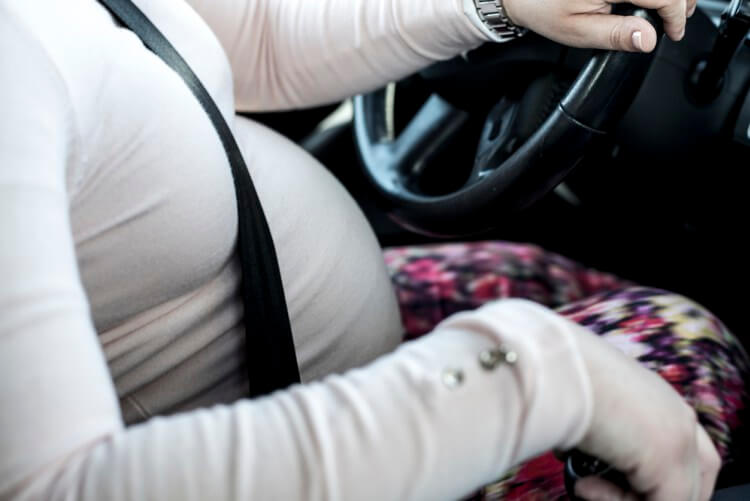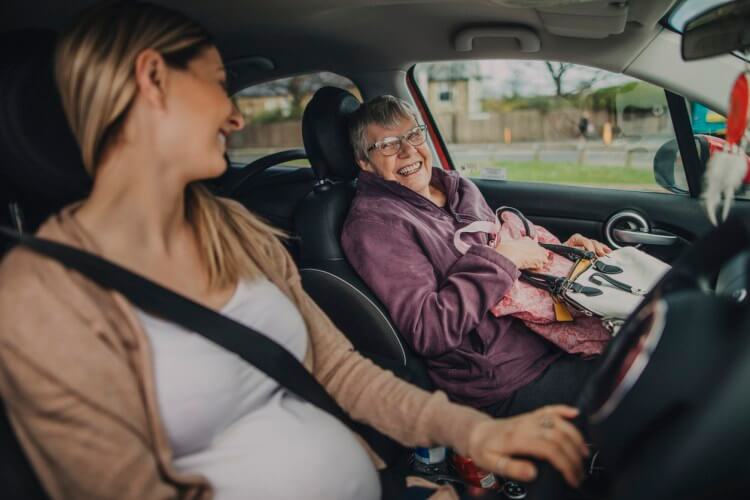How to Wear Your Seat Belt While Pregnant
- Category: Living Well
- Posted On:
- Written By: Cheryl Tschirn, RN, BSN
Although traveling during pregnancy is normal and a lot of women do it, it is important for pregnant women to practice safe driving while pregnant. The Centers for Disease Control and Prevention (CDC) estimates that 32,800 pregnant women are involved in motor vehicle crashes every year.
Should you buckle up?
Yes, you should buckle up. Doctors recommend wearing a seatbelt at every stage of your pregnancy. This is the most effective way to protect you and your baby in a car accident.
What is the right way to buckle up?
- Only travel in vehicles with three-point restraints.
- Your shoulder belt should be away from you neck but on your shoulder.
- The shoulder belt should be placed between your breasts and to the side of your belly.
- Your shoulder belt should never be placed behind your back or under your arm.
- The lap belt should be placed below your belly. The belt should fit snug across your hips and pelvic bone.
- Also, your lap belt should not be placed on your stomach.
- Avoid wearing bulky clothes so the belt can be close to your body.

How should I adjust my seat?
- Make sure you are comfortably positioned upright.
- You should also be positioned comfortably away from the steering wheel and pedals.
- Keep as much distance from the steering wheel and your belly by moving your seat back and slightly tilting it away. Also, tilt your steering wheel towards your breastbone and not your belly. Your breastbone should be at least 10 inches away from the steering wheel.
- Try not to recline excessively in order minimize the gap between your shoulder and seat belt.
Are air bags safe?
- You should leave your air bags on in your vehicle. Air bags and seat belts work together to provide the highest protection for you and your baby.
- The American College of Obstetricians and Gynecologists states the benefits of an air bag outweighs the risks to a pregnant woman and her baby.
- Side air bags do not pose a risk either.
What should I do if I am in an accident?
Contact your doctor immediately, even if you are in a minor accident or the passenger.
Your physician will most likely check your baby’s heartbeat.
According to the CDC, pregnant women in crashes without documented injuries are at greater risk of preterm labor.

What are some additional safety tips?
- If possible, don’t drive and be a passenger by sitting in the back seat. In the last few months of pregnancy, your uterus becomes closer to the steering wheel and can be crushed during an accident.
- Cut down on any distractions, such as talking on the phone, eating or texting.
- Pay attention to your surroundings and road conditions.
- Leave sufficient room behind cars to give yourself reaction time.
- If you are feeling lethargic, nauseated, or dizzy, do not drive your car.
- If roadways are wet, reduce your speed.
- If you are driving for a prolonged time, take frequent “bathroom” breaks.
- Also, choose a modern car as your vehicle. Modern cars are generally safer than older models.
 Cheryl A. Tschirn, RN, BSN is the OB Navigator for the Family Birthing Center at Touro Infirmary. Since the age of five, Cheryl knew she wanted a career in nursing. She graduated with a BSN from LSU’s School of Nursing in 1981. Cheryl began working in cardiology and pre and post surgical care. She found her calling in 1985 when she began working in Ambulatory OB/GYN nursing. For 28 years, Cheryl has worked in the field as a staff nurse, manager and director. She has served in her current role as Community Educators since 2013 and states that her job is “an absolute joy”. Cheryl enjoys working closely with families and helping preparing them to welcome a growing family.
Cheryl A. Tschirn, RN, BSN is the OB Navigator for the Family Birthing Center at Touro Infirmary. Since the age of five, Cheryl knew she wanted a career in nursing. She graduated with a BSN from LSU’s School of Nursing in 1981. Cheryl began working in cardiology and pre and post surgical care. She found her calling in 1985 when she began working in Ambulatory OB/GYN nursing. For 28 years, Cheryl has worked in the field as a staff nurse, manager and director. She has served in her current role as Community Educators since 2013 and states that her job is “an absolute joy”. Cheryl enjoys working closely with families and helping preparing them to welcome a growing family.


